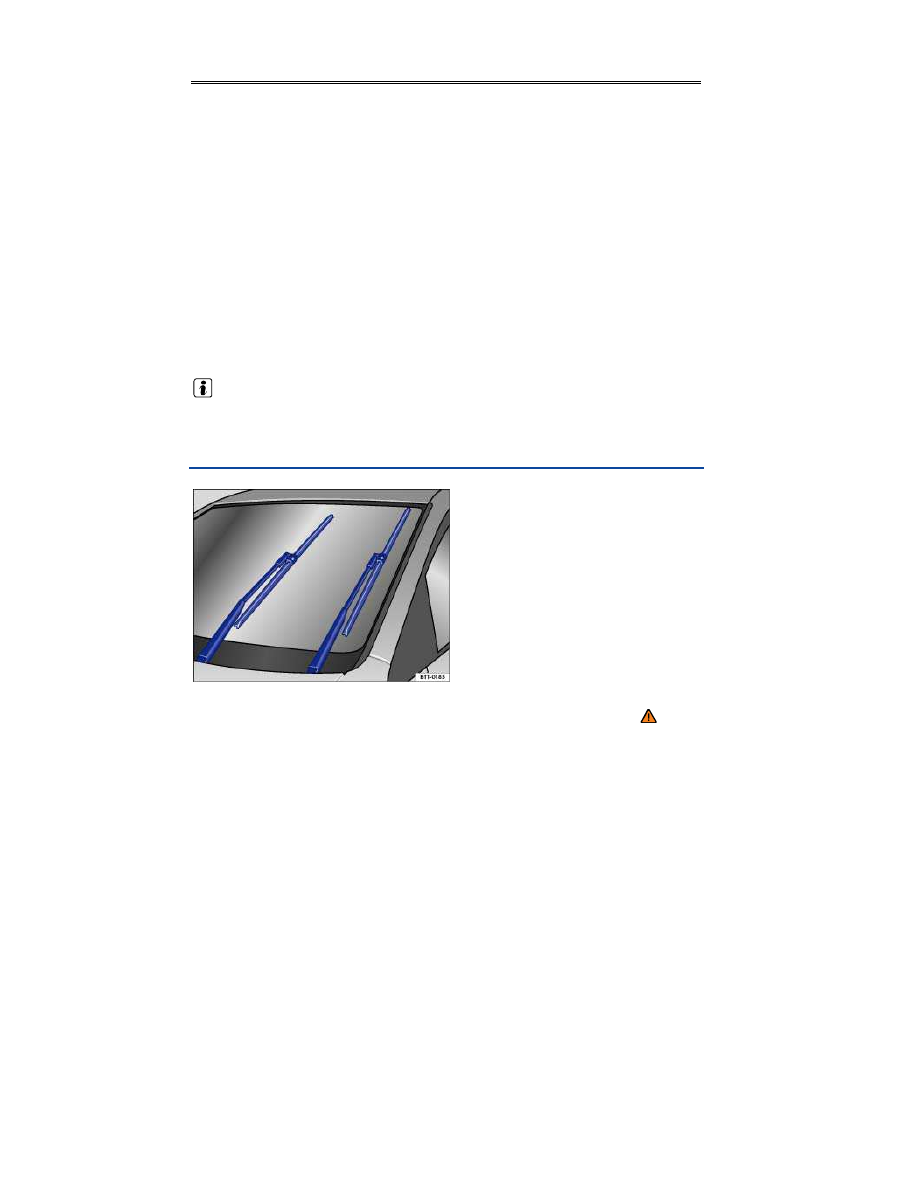Volkswagen EOS (2015 year). Instruction - part 9

Wiper performance in different situations:
During intermittent wiping:
Speed-dependent interval control: The higher the vehicle
speed, the faster the wipers move.
Heated washer nozzles
The heating thaws frozen washer nozzles, but not the fluid supply hoses. When the ignition is switched
on, the heat applied to the washer nozzles is automatically regulated depending on the outside air
temperature.
Headlight washer system
The headlight washer system cleans the headlight glass.
If the ignition and the headlights (high or low beams) are switched on, the headlights are cleaned the
first time and every fifth time the front windshield washers are activated. This happens only when the
low or high beams are on when the windshield wiper lever is pulled towards the steering wheel.
However, the headlights must still be washed by hand periodically (for instance, during refueling) in
order to get rid of hard-to-remove dirt (like insect splatter).
To help make sure that the headlight cleaning system works during winter weather, always keep the
headlight washer nozzles free of snow and remove any ice with a deicer spray before driving. Use a
deicer spray to remove any ice.
If there is something on the windshield, the wiper will try to wipe it away. If it continues to block
the wiper, the wiper will stop moving. Remove the obstacle and switch the wiper on again.
Windshield wiper service position
Fig. 89 Windshield wiper in service position.
Please first read and note the introductory information and heed the WARNINGS
In the service position, the wiper arms can be lifted away from the windshield
⇒
fig. 89
. The wipers are
moved to the service position as follows:
The engine hood must be closed, Working in the engine compartment.
Switch the ignition off, turn it on briefly, and then off again.
Press the windshield wiper lever down briefly
⇒
fig. 88
(E)
when the ignition is off.